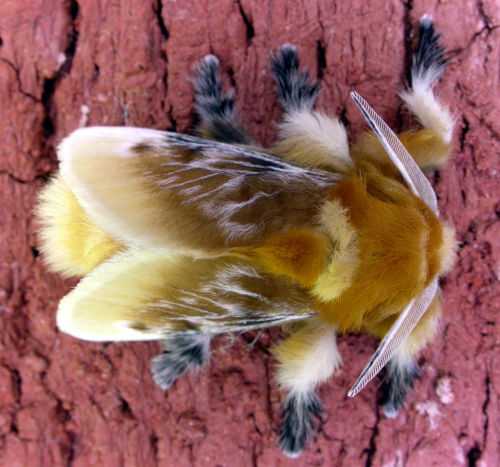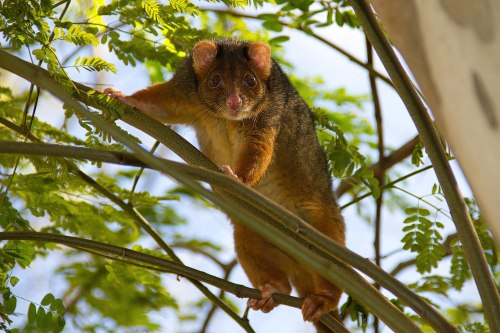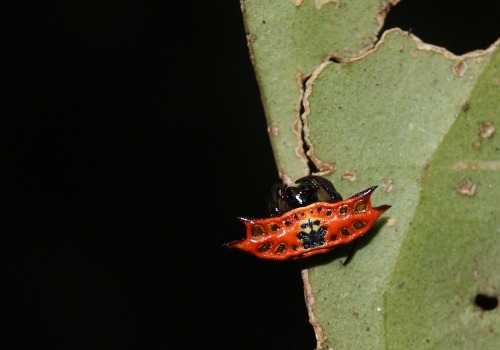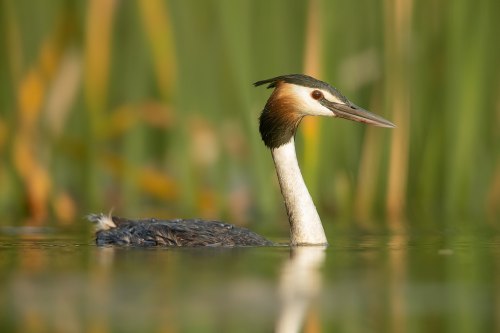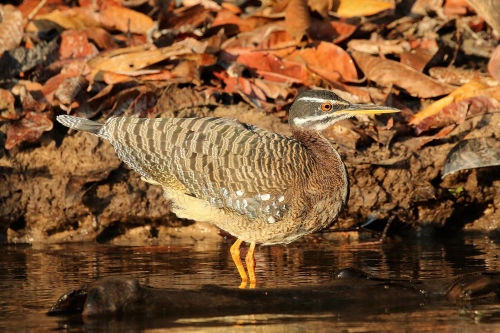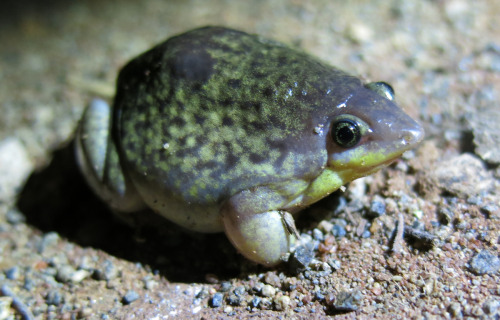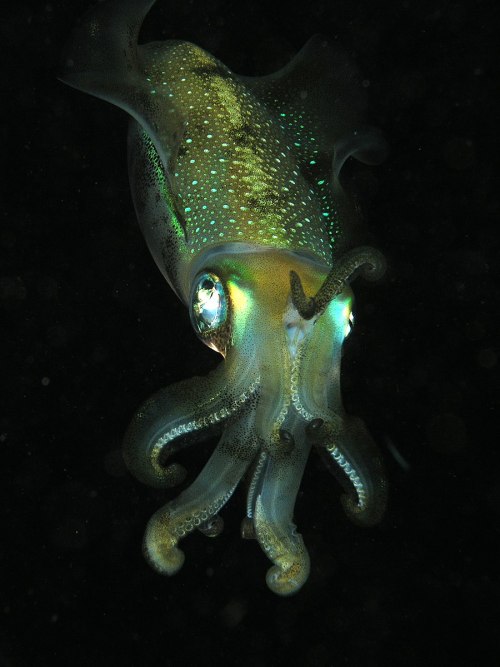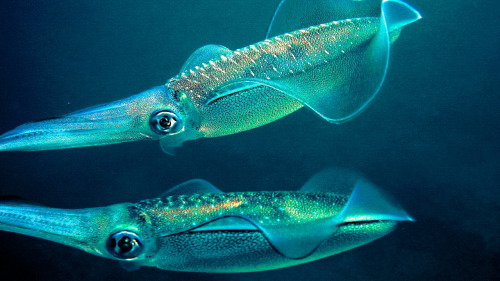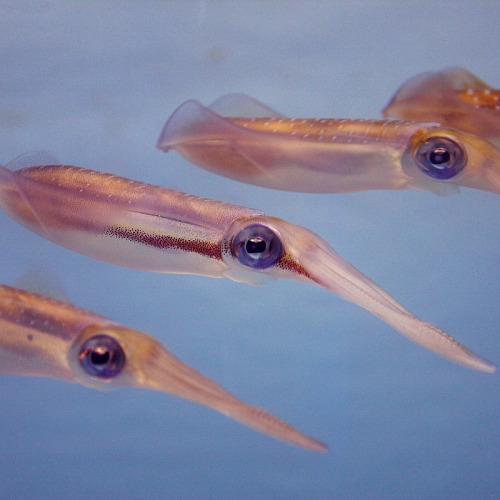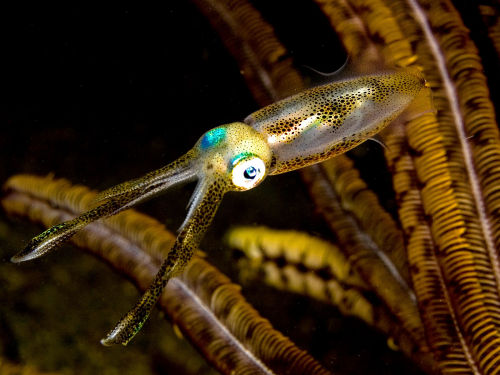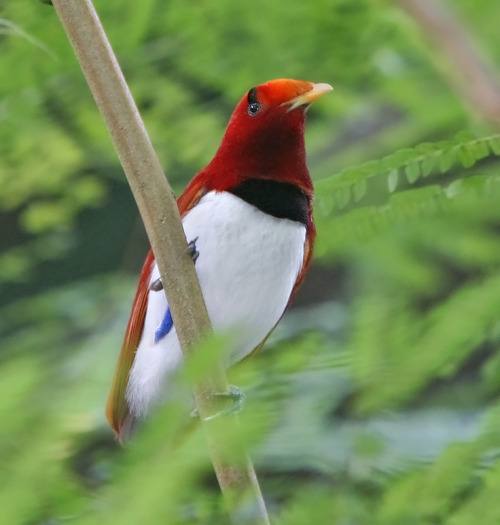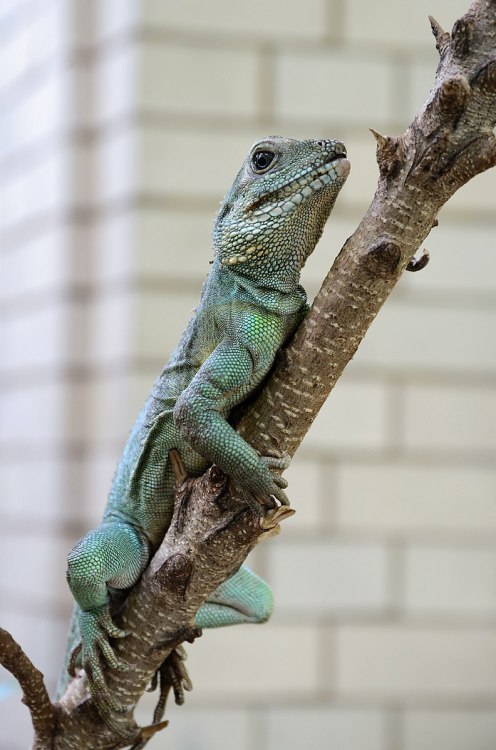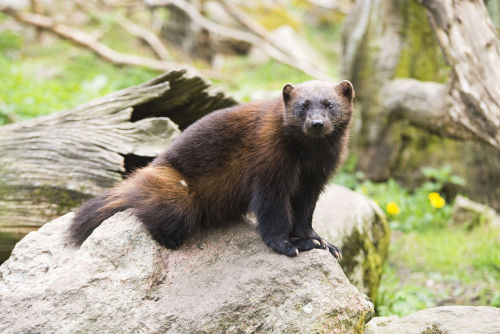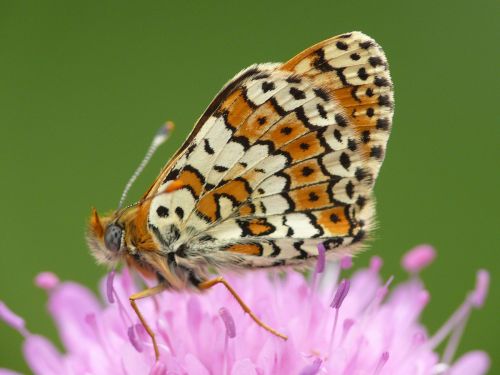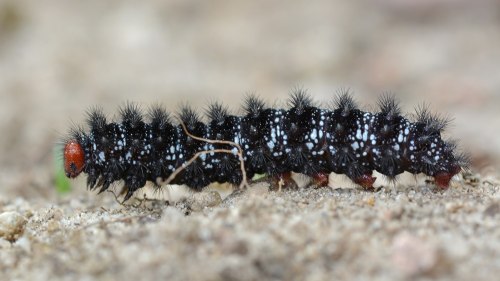#biodiversity

Goldenrod crab spider (Misumena vatia, Fam. Thomisidae)
The gray weather and the cold wind do not really encourage the photo outing. Fortunately, there is always something going on in the honeysuckle hedge that borders the garden!

Finally reunited!
After waiting all winter in the darkness of their lodges in the hollow of the bamboo stalks,
After flying incessantly around the nests,
Carpenter bee pairs form in the warm March sun



Mason bees visiting nests while searching females (Osmia sp, Megachilidae - March 2022)

European hornet(Vespa crabro - March 2022)

Spider mom
(Pisaura mirabilis)

Lime hawk moth, (Mimas tiliae - Sphingidae)










Diplotomma venustum
Venerating celebrities is out, venerating lichens is IN! Public figures will let you down and devastate you emotionally but you know who would never do that to you? D. venustum. They’re your unproblematic fave now. Deal with it.
This crustose lichen grows in thick, white rosettes dotted with black or chalky gray apothecia. It colonizes calcium-rich rocks and human-made surfaces in open areas of northern Africa, Asia, Europe, North America, and Greenland.
Megalopyge opercularis
Megalopyge opercularis is a moth of the family Megalopygidae. The inch-long larva is generously coated in long, luxuriant hair-like setae, making it resemble a tiny Persian cat. The “fur” of the larva contains venomous spines that cause extremely painful reactions in human skin upon contact. The adult moth is covered in long fur in colors ranging from dull orange to lemon yellow, with hairy legs and fuzzy black feet. M. opercularis can be found on oak, elm, and wild plum, among others, as well as many garden plants such as roses and ivy. It is distributed throughout the eastern United States between extreme southeastern Virginia and Florida, the southern United States, Mexico, and parts of Central America. The caterpillar is regarded as a dangerous insect because of its venomous spines. Exposure to the caterpillar’s fur-like spines leads to an immediate skin irritation characterized by a “grid-like hemorrhagic papular eruption with severe radiating pain.” Victims describe the pain as similar to a broken bone or blunt-force trauma. The reactions are sometimes localized to the affected area, but are often very severe, radiating up a limb and causing burning, swelling, nausea, headache, abdominal distress, rashes, blisters, and sometimes chest pain, numbness, or difficulty breathing.
photo credits: Patrick Coin,Amizrachi,Lacy L. Hyche
Post link
Common ringtail possum (Pseudocheirus peregrinus)
The common ringtail possum is an Australian marsupial. It lives in a variety of habitats and eats a variety of leaves of both native and introduced plants, as well as flowers, fruits and sap. This possum also consumes a special type of faeces that is produced during the daytime when it is resting in a nest. This behaviour is called caecotrophy and is similar to that seen in rabbits. The common ringtail possum weighs between 550 and 1100 g and is approximately 30–35 cm long when grown. The common ringtail possum is nocturnal and well adapted to arboreal life. It relies on its prehensile tail and rarely descends to the ground. They communicate with soft, high-pitched, and twittering calls.
photo credits: Andrew Mercer,Glen Fergus
Post link
Jocotoco antpitta (Grallaria ridgelyi)
The jocotoco antpitta is an endangered antpitta, a bird from Ecuador and Peru.The jocotoco antpitta is a large (150–200 g) antpitta with a striking head pattern showing tufts of white plumes beneath the eyes. It has a song similar to the hooting of the rufous-banded owl. It inhabits only wet, mossy forest with ample Chusquea bamboo stands and silvery-leaved Cecropia trees. It is found at altitudes of 2,250 to 2,700 meters.The IUCN classifies it as endangered.
photo credits: Supreet Sahoo
Post link
Four-spined jewel spider (Gasteracantha quadrispinosa)
The four-spined jewel spider is a brightly coloured species of spider in the spiny orb-weaver genus Gasteracantha.It occurs in wet forests of Queensland, Australia, and New Guinea, where it builds vertical orb webs approximately 1.5 m across and hangs in the centre of the web to wait for prey. Female four-spined jewel spiders are distinctively shaped and coloured. Their abdomens are flat, oblong, and curved slightly forward, 5-6 mm wide, excluding spines. The corners of the abdomen are armed with short spines, the rear pair slightly longer than the pair in front.
photo credits: Danny S.
Post link
Great crested grebe (Podiceps cristatus)
The great crested grebe is a member of the grebe family of water birds noted for its elaborate mating display. The great crested grebe is the largest member of the grebe family found in the Old World, with some larger species residing in the Americas. They measure 46–51 cm long with a 59–73 cm wingspan and weigh 0.9 to 1.5 kg.It is an excellent swimmer and diver, and pursues its fish prey underwater. The adults are unmistakable in summer with head and neck decorations. The young are distinctive because their heads are striped black and white. The great crested grebe has an elaborate mating display. Like all grebes, it nests on the water’s edge, since its legs are set relatively far back and it is thus unable to walk very well. In a clutch of two or more hatchlings, male and female grebes will each identify their ‘favourites’, which they alone will care for and teach. Unusually, young grebes are capable of swimming and diving almost at hatching. The adults teach these skills to their young by carrying them on their back and diving, leaving the chicks to float on the surface; they then re-emerge a few feet away so that the chicks may swim back onto them. The great crested grebe feeds mainly on fish, but also small crustaceans, insects small frogs and newts.
photo credits: JJ Harrison,Bengt Nyman,Yerpo,Ken Billington
Post link
Sunbittern (Eurypyga helias)
The sunbittern is a bittern-like bird of tropical regions of the Americas, and the sole member of the family Eurypygidae and genus Eurypyga. It is found in Central and South America, and has three subspecies. The species is found in the humid Neotropical forests, generally with an open understorey and near rivers, streams, ponds or lagoons. They are cryptic birds that display their large wings, that exhibits a pattern that resemble eyes, when they feel threatened. The sunbittern consumes a wide range of animal prey. Insects form an important part of the diet, with cockroaches, dragonfly larvae, files, katydids, water beetles and moths being taken. Other invertebrate prey includes crabs, spiders, shrimps and earthworms. They will also take vertebrate prey including fish, tadpoles, toads and frogs, eels and lizards. Sunbitterns are one of 12 species of birds in five families that have been described as fishing using baits or lures to attract prey to within striking distance. This type of behaviour falls within the common definition of tool use. In sunbitterns this behaviour has only been observed in captive birds so far.
photo credits: Sharp Photography,Stavenn,Snowmanradio
Post link
Marbled snout-burrower (Hemisus marmoratus)
The marbled snout-burrower is a species of frog in the family Hemisotidae. It is found in sub-Saharan Africa. Its natural habitats are subtropical or tropical dry forest, moist lowland forest, savanna, shrubland, grassland, swamps, freshwater lakes, freshwater marshes, arable land, plantations, seasonally flooded agricultural land, and canals and ditches.
photo credits: Ryanvanhuyssteen
Post link
Bigfin reef squid (Sepioteuthis lessoniana)
The bigfin reef squid is a commercially important species of loliginid squid. Bigfin reef squids are characterised by a large oval fin that extends throughout the margins of its mantle, giving them a superficial similarity to cuttlefish. They are small to medium-sized squids, averaging 3.8 to 33 cm in length. They exhibit elaborate mating displays and usually spawn in May, but it can vary by location. The paralarvae resemble miniature adults and are remarkable for already having the capability to change body colouration upon hatching. Bigfin reef squids have the fastest recorded growth rates of any large marine invertebrate, reaching 600 g in only four months. They are a short-lived species, with a maximum recorded lifespan of 315 days. The diet of bigfin reef squids comprises mainly crustaceans and small fish. They are found in the temperate and tropical waters of the Pacific and Indian Oceans, and have recently been introduced into the Mediterranean as a Lessepsian migrant. They are commonly found near the shoreline, near rocks, and coral reefs. They are fished in vast quantities for human food in Asia. Because of their rapid growth rate, short life span, and tolerance to handling and captivity, bigfin reef squids are regarded as one of the most promising species for mariculture. They are also a valuable source of giant axons for medical research.
photo credits: Nhobgood,Divervincent,wiki,Nhobgood
Post link
King bird-of-paradise (Cicinnurus regius)
The king bird-of-paradise is a passerine bird of the Paradisaeidae (Bird-of-paradise) family. It is the sole member of the genus Cicinnurus.The king bird-of-paradise is distributed throughout lowland forests of New Guinea and nearby islands. The diet consists mainly of fruits and arthropods. An extraordinary courtship display is performed by the male with a series of tail swinging, fluffing of the white abdominal feathers that makes the bird look like a cottonball, and acrobatic movements of their elongated tail wires.
photo credits: Doug Janson
Post link
Chinese water dragon (Physignathus cocincinus)
The Chinese water dragon is a species of agamid lizard native to China and mainland Southeast Asia. Chinese water dragons can grow up to 1 m in total length, including tail, and can live from 10 to 15 years. Coloration ranges from dark to light green, or sometimes purple with an orange stomach. Like many other reptiles the Chinese water dragon possesses a small, iridescent, photosensitive spot between their eyes referred to as the pineal eye (or parietal eye, or colloquially as the third eye) that is thought to help thermoregulate their bodies by sensing differences in light to assist with basking and seeking shelter after sunset. Since it recognizes differences in light, the parietal eye can also help the lizard avoid predation from birds and other aerial threats, and can awaken from deep sleep from even slight changes in light from overhead.Native to the lowland and highland forests of southern China and southeastern Asia (Thailand, Vietnam, Laos, Cambodia and Burma), Chinese water dragons are most commonly found along the banks of freshwater lakes and streams. They are active during the day (diurnal), and spend most of their time in the trees or plants (arboreal). If threatened, the dragon will drop from the trees into the water and either swim to safety or remain submerged for up to 90 minutes. Though they will also eat vegetation, the diet of the water dragon consists mainly of insects, supplemented with an occasional small fish, mammal or reptile.
photo credits: Marcel Burkhard,Rushenb,Alvesgaspar
Post link
Wolverine (Gulo gulo)
The wolverine is the largest land-dwelling species of the family Mustelidae. It is a stocky and muscular carnivore, more closely resembling a small bear than other mustelids. A solitary animal, it has a reputation for ferocity and strength out of proportion to its size, with the documented ability to kill prey many times larger than itself. The wolverine is found primarily in remote reaches of the Northern boreal forests and subarctic and alpine tundra of the Northern Hemisphere, with the greatest numbers in Northern Canada, the American state of Alaska, the mainland Nordic countries of Europe, and throughout western Russia and Siberia. Its population has steadily declined since the 19th century owing to trapping, range reduction and habitat fragmentation. The wolverine is now essentially absent from the southern end of its European range. Though its legs are short, its large, five-toed paws with crampon-like claws and plantigrade posture enable them to climb up and over steep cliffs, trees and snow-covered peaks with relative ease.
photo credits: Jonathan Othén
Post link
Glanville fritillary (Melitaea cinxia)
The Glanville fritillary is a butterfly of the family Nymphalidae. These butterflies live in almost all of Europe, especially Finland, and in parts of northwest Africa. It has been discovered that this butterfly only mates one time in June or July and lays its eggs. It does not provide any protection to these eggs or care for the offspring. As adults, the Glanville fritillaries are short-lived; they spend most of their lives as caterpillars. As caterpillars, Glanville fritillaries enter a stage of diapause, which is a period of suspended development, during the winter time. The spiked speedwell and ribwort plantain are the Glanville fritillary’s preferred plants to lay eggs and to eat as larvae. Female butterflies will show a preference for one plant species over the other when deciding where to lay their eggs, but the caterpillars have no preference once they hatch. After entering the adult phase the fritillaries feed on nectar of the spiked speedwell and ribwort plantain, among others. This species of butterfly is at risk of population decline because it is not a migratory species.
photo credits: Harald Süpfle,Sven Damerow
Post link


